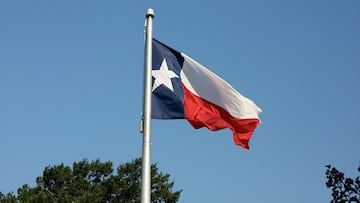No one expected it but it’s real: the real owner of Texas comes to light
The Lone Star State is known for its vast size but it’s not a cattle rancher or oil company that is the largest landholder in the State of Texas.

When Texas became the 28th state in the United States at the end of 1845, it took the title of the biggest state in the Union. It would hold that distinction for over 100 years until Alaska became the 49th state in 1959. However, it is still used as a reference for anything that is truly massive.
The Lone Star State has 171.9 million acres of land spread over 254 counties. You could fit, Connecticut, Delaware, Hawaii, Indiana, Kentucky, Maine, Maryland, Massachusetts, New Hampshire, New Jersey, South Carolina, Rhode Island, Vermont, Virginia, and West Virginia, 15 of the smallest US states, simultaneously within Texas’ borders.
Recently, the Houston Chronicle wondered who owned all the land in Texas. The news outlet analyzed property records from each of the state’s counties and developed a first-of-its-kind tool to identify who the landowners were. The task was no easy one, as some single owners were under multiple aliases like the biggest with over 250.
Who owns Texas?
When thinking about the vastness of the state, it conjures up images of cattle, oil fields, and roads that run off into the distance until the horizon. But it is neither a rancher nor oil company that is the biggest landowner in Texas.
That distinction goes to Uncle Sam. The US government owns 2.25 million acres of land across 196 counties through several agencies. A large chuck of those holdings belongs to the National Park Service. That includes over a third of the overall total which are part of the Big Bend National Park along the border with Mexico.
Other agencies with large landholdings in Texas are the US military, the Army Corps of Engineers, and the Forest Service.
Here are the other largest landholders according to the Houston Chronicle findings:
| Landowner | Acres | Parcels | Counties |
|---|---|---|---|
| USA | 2.25 million | 11,100 | 196 |
| University of Texas Lands/ University of Texas System | 2.1 million | 4,100 | 43 |
| State of Texas | 1.61 million | 26,000 | 244 |
| Texas Pacific Land | 875,800 | 1,470 | 21 |
| King Ranch | 820,000 | 680 | 31 |
| Crown Pine Timber/ Caddo Sustainable Timber | 760,700 | 3,130 | 20 |
| Briscoe Ranch | 724,000 | 1,590 | 17 |
The Houston Chronicle pointed out that at the time of his election to be Texas Governor in 1972, Dolph Briscoe Jr. was reportedly the largest individual private landowner. The bulk of his family’s holdings is in South and West Texas.
When a railroad company went bankrupt, Texas Pacific Land was created in the 1880s. It leases out the land to oil companies to exploit the reserves underground and has benefited greatly from the Permian Basin oil boom as a result of fracking.
While initially the University Land benefited from leasing out its holdings for cattle grazing, in addition to that, nowadays it gets royalties from oil and gas companies and income from companies that use the land for wind power generation. Those funds are divided among the University of Texas and Texas A&M University.
Related stories
Get your game on! Whether you’re into NFL touchdowns, NBA buzzer-beaters, world-class soccer goals, or MLB home runs, our app has it all.
Dive into live coverage, expert insights, breaking news, exclusive videos, and more – plus, stay updated on the latest in current affairs and entertainment. Download now for all-access coverage, right at your fingertips – anytime, anywhere.
